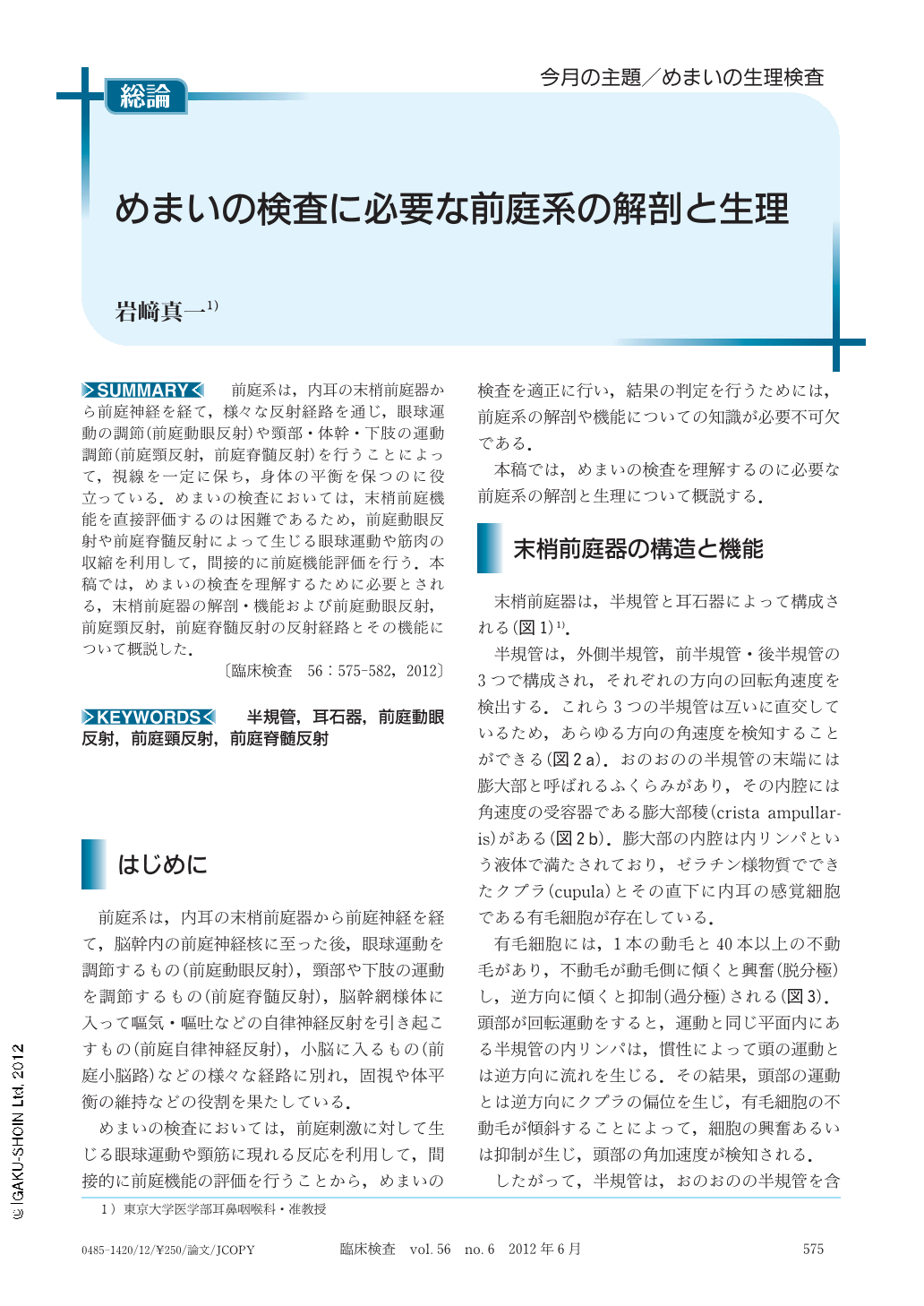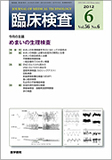Japanese
English
- 有料閲覧
- Abstract 文献概要
- 1ページ目 Look Inside
- 参考文献 Reference
前庭系は,内耳の末梢前庭器から前庭神経を経て,様々な反射経路を通じ,眼球運動の調節(前庭動眼反射)や頸部・体幹・下肢の運動調節(前庭頸反射,前庭脊髄反射)を行うことによって,視線を一定に保ち,身体の平衡を保つのに役立っている.めまいの検査においては,末梢前庭機能を直接評価するのは困難であるため,前庭動眼反射や前庭脊髄反射によって生じる眼球運動や筋肉の収縮を利用して,間接的に前庭機能評価を行う.本稿では,めまいの検査を理解するために必要とされる,末梢前庭器の解剖・機能および前庭動眼反射,前庭頸反射,前庭脊髄反射の反射経路とその機能について概説した.
The vestibular system contributes to the maintenance of gaze stability and body balance during movement via various vestibular reflexes, such as vestibulo-ocular reflex, vestibulo-collic reflex and vestibulo-spinal reflex. In perfoming vestibular examinations, we usually measure the responses expressed in the eye movements or in the muscles of the neck and legs in response to vestibular stimulation, since we cannot measure function of the peripheral vestibular organs directly. In this paper, I explained the anatomy and physiology of the peripheral vestibular systems and the pathway and function of vestibular reflexes, which are essential for understanding the principles of vestibular examinations.

Copyright © 2012, Igaku-Shoin Ltd. All rights reserved.


